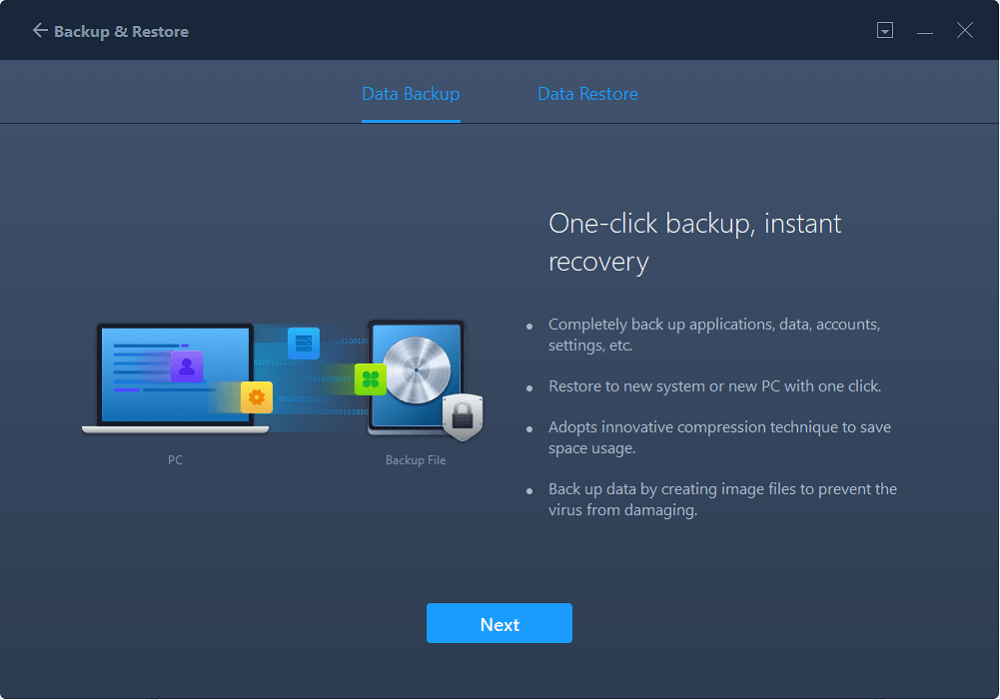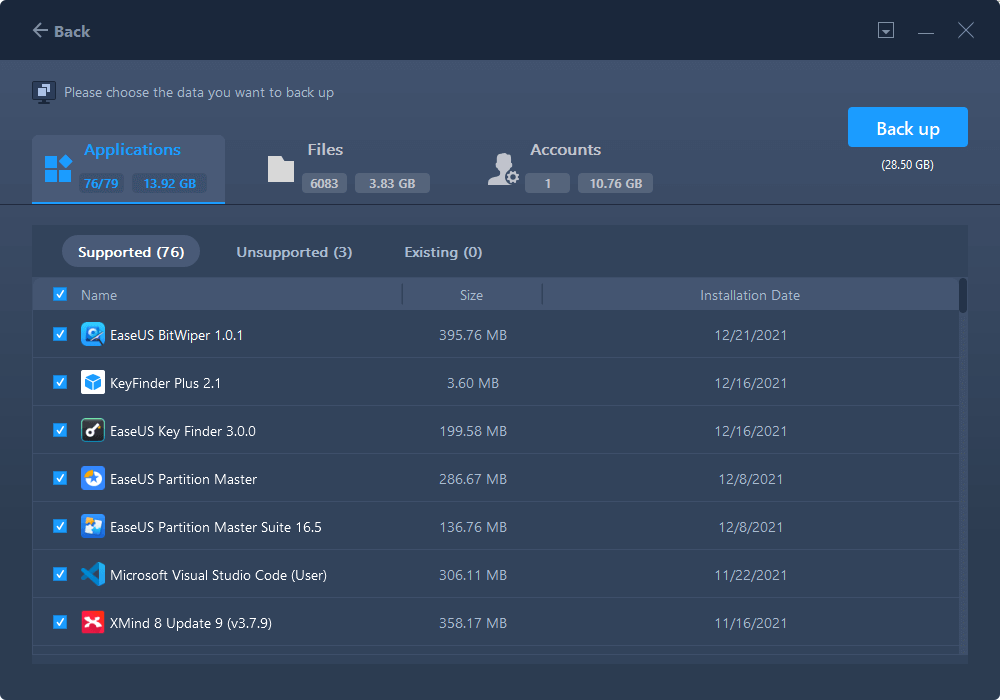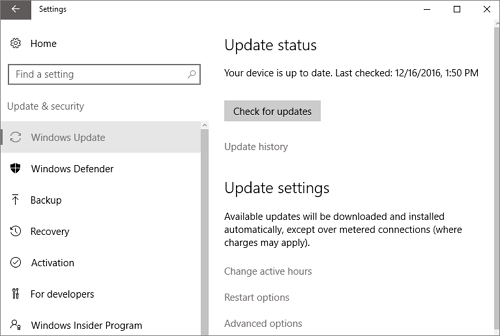Page Table of Contents
Reviews and Awards
In this short blog post, we'll learn how to upgrade Windows 10 to Windows 11 without losing programs. As you probably know, Windows 11 offers more advanced features than Windows 10 and previous Windows versions, so many people desire to upgrade their Windows and install the latest Windows version. You can enjoy its several programs and features by installing or upgrading it.
View the Necessary Information to Upgrade Windows 10 to Windows 11:
| ⏱️Duration | 5-10 minutes |
| 🧑💻Difficulty | Medium |
| ⚒️Tool | EaseUS Todo PCTrans, Windows 11 Installation Assistant |
| 👣Steps |
1️⃣Stage 1. Check Whether Your PC Supports Windows 11 2️⃣Stage 2. Backup Programs Before Windows 10 to Windows 11 Upgrade 3️⃣Stage 3. Upgrade Windows 10 to Windows 11 without Losing Programs |
Does Upgrade Windows 10 to Windows 11 Delete Programs?
No, the upgradation process from Windows 10 to 11 won't affect or delete anything. You can access your files that were previously stored in Windows 10 after upgrading to Windows 11. But the risk is anticipated. Although chances are rare, you should know that not every update works perfectly. Acknowledging the possibility of encountering issues where certain files could be inadvertently lost or deleted is important. So, to avoid any potential risk, you should back up your necessary data or all files or perform a full backup to preserve all your data and perform a Windows upgrade without worrying about anything. That's our strong recommendation for you.
Now that you're aware of all facts let's start backup your programs and data before the upgradation of Windows 10 to Windows 11 step-by-step and enjoy the new features of Windows 11 immediately. If you think this tutorial is helpful, you can share it with others in need.
How to Upgrade Windows 10 to Windows 11 without Losing Programs?
This section will give detailed steps for the different stages of upgrading to Windows 11, so if you're ready, start upgrading your Windows 10:
Stage 1. Check Whether Your PC Supports Windows 11
Stage 2. Backup Programs Before Windows 10 to Windows 11 Upgrade
Stage 3. Upgrade Windows 10 to Windows 11 without Losing Programs
Let's look at the step-by-step guide:
Stage 1. Check Whether Your PC Supports Windows 11
Now, it's necessary to check your PC before switching to Windows 11, whether it supports Windows 11 or doesn't meet requirements. Because there are a few specifications for Windows 11, and your PC should meet those requirements, you can switch to Windows 11. Don't worry; we'll guide you step-by-step to easily check your PC/Laptop.
Let's first look at the specifications for Windows 11:

You can do it through a PC health checker when checking if your PC is compatible and can support Windows 11. Sometimes, the PC health checker can be installed by default, but if you don't find it on your PC, you have to install it to check your PC's capability.
Here's how:
Step 1. Download and install Microsoft's PC health checker by visiting the official Microsoft website.
Step 2. The app's home page displays the message, "PC health at a glance." Positioned at the top is a box introducing Windows 11. To proceed, simply click "Check now" to see whether it's compatible.
There is also another easy way to check it. Go to the Windows 10 settings, click "Update & Security," and see at the top right corner if it doesn't meet the requirements.
Stage 2. Backup Programs Before Windows 10 to Windows 11 Upgrade
Regarding potential risks, while performing the update process from Windows 10 to 11, we should back up before taking action and preserve our necessary and valuable data or files. We have an extraordinary tool that will help us from data loss.
It's EaseUS Todo PCTrans to back up Windows programs. You can back up all your Windows 10 programs, settings, and data for free. You can restore your programs anytime once you successfully upgrade to Windows 11. So, it's a really big deal to preserve your Windows 10 programs through EaseUS Todo PCTrans before starting the Windows 11 update process.
Follow these steps to back up your programs before Windows 10 to Windows 11 upgrade:
Step 1. Connect your USB (flash) drive/external hard drive to your source computer.
Launch Todo PCTrans, click "Backup & Restore > Start" on the main screen.

Step 2. Select "Data Backup" and click "Next". Click "Confirm" to move on.

Step 3. Choose the specific data, applications, and accounts in the Applications, User Accounts, and Files columns to choose the specific data, applications, etc. to create a backup file.

You May Also Like:
Stage 3. Upgrade Windows 10 to Windows 11 without Losing Programs
So, let's upgrade from Windows 10 to Windows 11 without losing programs or data loss. We've three ways to perform this task, and we'll present each method with complete instructional steps to make the process easier for you. We hope you have preserved your programs/data by creating a backup to avoid potential loss or disaster and are now ready to upgrade.
Here are three methods to update our Windows:
Method 1. Upgrade to Windows 11 via Windows Update
Method 2. Download Windows 11 ISO File
Method 3. Use Windows 11 Installation Assistant
Please pay attention to each method and step and understand everything because your little mistake can lead to loss. So, kindly read everything carefully and then choose any method which suits you better.
Method 1. Upgrade to Windows 11 via Windows Update
This is an easy and simple method. Follow these instructional steps from your Windows 10 to get updated Windows 11:
Step 1. Open "Settings." Simply press the "Windows + I" buttons simultaneously to open it.
Step 2. Click "Update & Security."
Step 3. Click "Check for updates" and wait a few moments until it completes the search.

Step 4. You'll see all available updates and find Windows 11 updates.
Step 5. Simply click on the download and proceed with the installation. After starting downloading process, you will receive a prompt to restart your system.
Step 6. Pay close attention to the procedure; when prompted about preserving your files, you have to select the option to retain them.
Note: The installation takes time, and your PC/Laptop may reboot multiple times. Please be patient and allow Windows to complete the installation smoothly.
Method 2. Download Windows 11 ISO File
Here is another way, you can upgrade your Windows 10 to Windows 11 by downloading Windows 11 ISO files from the official Microsoft website. After downloading the Windows 11 ISO files, you must create a bootable USB and burn the ISO to USB. In this regard, the EaseUS Partition Master comes handy to create a bootable USB without extra effort. So, first of all, download the EaseUS Partition Master to create a bootable and then download the ISO file of Windows 11.
Here are the instructional steps:
Step 1. Visit Microsoft's official website and Windows 11 download page.
Step 2. Under the "Download Windows 11 Disk Image (ISO) for x64 devices", select "Windows 11 (multi-edition ISO for x64 devices)".

Step 3. Click "Download Now," choose the language, and click "Confirm."

Step 4. Upon receiving the download link, you can click on the "64-bit Download" button to obtain the Windows 11 ISO.
Step 5. Now, you need to create a bootable USB through the EaseUS Partition Master or simply locate the downloaded Windows 11 ISO file, right-click on that, select "Show more options," click "Burn disc image," and follow further on-screen instructions.
Step 6. After making a bootable USB, you can install Windows 11 through it.
Note: Connect your USB to your PC/Laptop to make a bootable USB. As the installation process begins for Windows 11, you will experience prompts asking whether you wish to preserve your files. Selecting the option to retain your files at this stage is crucial.
Method 3. Use Windows 11 Installation Assistant
This method utilizes the Windows 11 Installation Assistant. Whether upgrading from Windows 10 to Windows 11 or performing a clean installation, the Windows 11 Installation Assistant offers a convenient way to install the new operating system.
Step 1. Visit the Windows 11 Downloads page and click the "Download now" button beneath the Windows 11 Installation Assistant.

Step 2. After downloading the executable file, run it to initiate the installation process. Read the agreement, then select "Accept and install."
Step 3. Windows 11 will begin downloading and installing. Please exercise patience until the process is complete. Follow the instructions to finalize the installation.
Why Upgrade Windows 10 to Windows 11?
Upgrading from Windows 10 to Windows 11 brings numerous benefits and exciting features. Let's explore some compelling and exciting reasons to make the transition.
Reasons to upgrade to Windows 11:
- Game Experience: Windows 11 offers improved gaming features, including Auto HDR, DirectStorage, and compatibility with Xbox Game Pass, enhancing your gaming experience with stunning visuals and faster loading times.
- Android Apps: With Windows 11, you can access a vast library of Android apps through the Microsoft Store, allowing you to enjoy your favorite mobile applications directly on your desktop.
- Widgets: Windows 11 introduces widgets, providing personalized, glanceable information such as weather updates, calendar events, news, and more, conveniently accessible from your desktop.
- Multi Desktop: Windows 11 enables multiple virtual desktops, allowing you to organize your work and personal tasks more efficiently, improving productivity and reducing clutter.
- Microsoft Teams Integration: Windows 11 integrates Microsoft Teams directly into the taskbar, enabling seamless communication and collaboration with colleagues, friends, and family.
- Snap Layouts: Snap layouts simplify multitasking by allowing you to snap multiple windows into organized layouts, making arranging and switching between applications effortless.
These features and enhancements in Windows 11 contribute to a more immersive gaming experience, expanded app availability, improved productivity, and enhanced desktop customization options.
Conclusion
We defined three ways with complete instructional steps to make switching from Windows 10 to Windows 11 easier. Now, you can upgrade your Windows 10 to Windows 11 without losing programs or data to enjoy many incredible and advanced features of Windows 11. But to avoid any potential risk, you should proceed with caution. As we discussed above, everything, such as before starting, you have to back up your programs or data through EaseUS Todo PCTrans.
We hope you know all facts and find this article helpful and informative. Thanks for reading!
FAQs About Upgrade Windows 10 to Windows 11 without Losing Programs
Let's check out the frequently asked questions below if you have any queries or want to learn more about upgrading Windows 10 to Windows 11 without losing programs.
1. Will I lose my Windows 10 license when I upgrade to Windows 11?
Upgrading to Windows 11 from Windows 10 will not invalidate your Windows 10 license. Microsoft offers an upgrade to Windows 11 for eligible Windows 10 devices, and your existing license will seamlessly transfer for free to the new operating system without any extra charges. Nevertheless, it's advisable to back up your important files and data as a precautionary measure before undergoing any significant OS upgrade.
2. How to refresh Windows 11 without losing programs?
There are several methods to refresh your Windows 11 without losing programs. You can easily do it by "Reset this PC."
Here are the simple steps:
Step 1. If your computer functions normally, access the settings by pressing Win+I, then go to System > Recovery > Reset this PC.
Step 2. If your computer cannot boot, create a recovery drive and boot from it. Choose your language and other preferences, click Next, then select "Repair your computer" > "Troubleshoot" > "Reset this PC."
Step 3. Select "Keep my files" in the pop-up window.
3. What will I lose if I upgrade to Windows 11?
When upgrading to Windows 11, you may lose compatibility with some older software, require updated device drivers, experience changes in features and interface, and need to reconfigure customization settings. Data loss is unlikely, but backing up important files is always recommended.
About the Author
Cici is the junior editor of the writing team of EaseUS. She accepted the systematic training on computers at EaseUS for over one year. Now, she wrote a lot of professional articles to help people resolve the issues of hard drive corruption, computer boot errors, and disk partition problems.
Reviews and Awards
-
EaseUS Todo PCTrans Free is a useful and and reliable software solution created to serve in computer migration operations, be it from one machine to another or from an earlier version of your OS to a newer one.
Read More -
EaseUS Todo PCTrans is by the folks at EaseUS who make incredible tools that let you manage your backups and recover your dead hard disks. While it is not an official tool, EaseUS has a reputation for being very good with their software and code.
Read More
-
It offers the ability to move your entire user account from your old computer, meaning everything is quickly migrated. You still get to keep your Windows installation (and the relevant drivers for your new PC), but you also get all your apps, settings, preferences, images, documents and other important data.
Read More
Related Articles
-
How to Transfer Adobe After Effects to New Computer [Step-by-Step Guide]
![author icon]() Sherly/2023/12/19
Sherly/2023/12/19 -
How to Transfer Files from Mega to Dropbox
![author icon]() Tracy King/2023/12/19
Tracy King/2023/12/19 -
Fix Windows 11 (22H2) Copy File Bug - Copy Large File Take Longer [Tried & 100% Working]
![author icon]() Tracy King/2023/12/12
Tracy King/2023/12/12 -
How to Transfer Files from iCloud to iPhone [Easy & Fast]
![author icon]() Tracy King/2023/12/19
Tracy King/2023/12/19